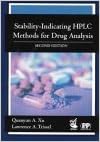Establishing Appropriate Storage Conditions for Biologics
Biologics are complex and sensitive therapeutic products that require specific storage conditions to maintain their stability, safety, and efficacy. The process of determining appropriate storage conditions involves a combination of scientific knowledge, stability studies, and regulatory guidance. In this discussion, I’ll outline the key steps to establish the right storage conditions for biologics.
Understanding Product Characteristics
1. Sensitivity: Evaluate the biologic’s sensitivity to factors such as temperature, light, humidity, and oxygen exposure.
2. Formulation: Consider the composition, excipients, and dosage form of the biologic, as they impact stability.
Review of Available Data
1. Previous Knowledge: Examine existing literature, manufacturer recommendations,
2. Reference Products: If applicable, use data from reference products to guide your stability assessment.
Stability Studies
1. Real-Time Studies: Conduct stability studies under recommended storage conditions to monitor the biologic’s behavior over time.
2. Accelerated Studies: Perform accelerated studies under exaggerated conditions to predict degradation pathways and estimate shelf life.
Storage Temperatures
1. Refrigerated (2°C – 8°C): Appropriate for many biologics that are stable under controlled cold conditions.
2. Frozen (-20°C to -80°C): Ideal for long-term storage of biologics susceptible to degradation at higher temperatures.
Protective Measures
1. Light Protection: Shield light-sensitive biologics from exposure to minimize photodegradation.
2. Moisture Control: Maintain low humidity levels to prevent moisture-induced degradation.
Regulatory Guidance
1. ICH Guidelines: Refer to the International Conference on Harmonisation (ICH) guidelines for stability testing of biotechnological and biological products.
2. Region-Specific Guidelines: Consult regulatory agencies in your region for specific requirements and recommendations.
Validation of Storage Conditions
1. Ongoing Monitoring: Continuously monitor storage conditions to ensure they are maintained within acceptable limits.
2. Stability-Indicating Methods: Develop analytical methods to detect degradation and changes in biologic quality.
Conclusion
Establishing appropriate storage conditions for biologics requires a combination of scientific assessment, stability studies, and adherence to regulatory guidance. By understanding the biologic’s characteristics, conducting stability studies, and validating storage conditions, you can ensure that these complex products remain stable, safe, and effective throughout their shelf life.
